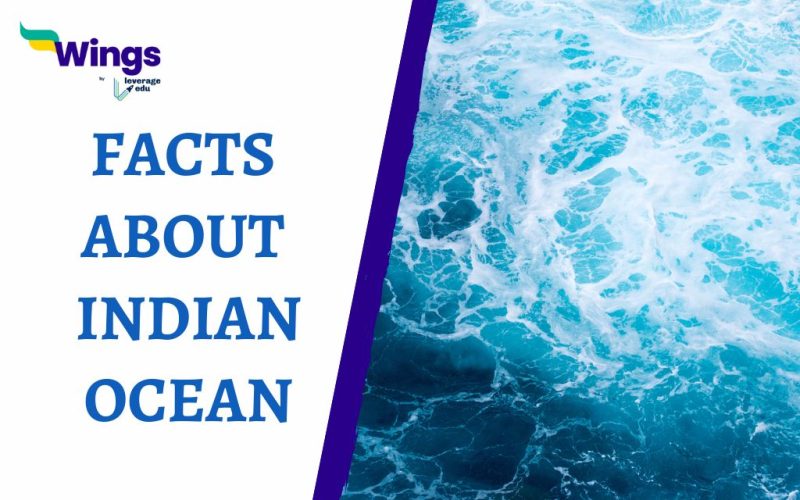Facts about Indian Ocean: Our planet is predominantly oceanic, with water covering 71% of its surface area. We have been taught this fact in school, but we weren’t told that these vast bodies of water encompass a staggering 139 million square miles (361 million square kilometres) and hold an estimated 1.37 billion cubic kilometres of liquid. One such water body is the Indian Ocean and this article will cover some interesting facts about the Indian Ocean.
10 Facts About the Indian Ocean
Table of Contents
Enjoy these 10 facts about the Indian Ocean that you would not have known by now.
- The Indian Ocean is the third-largest ocean, covering approximately 20% of the Earth’s surface. On average, it is 12,274 feet deep, with its deepest point reaching 24,442 feet in the Java Trench.
- The location of the Indian Ocean is between Africa, Asia, Australia, and Antarctica making it an important geopolitical ocean. It connects major continents and economic powerhouses.
- It shelters many important chokepoints like the Strait of Hormuz, the Suez Canal, and the Strait of Malacca, making it a key ocean for global trade and commerce.
- Famously known for its diverse marine ecosystem, the Indian Ocean has a rich variety of fish, including a significant portion of the world’s tuna catch.
- With stunning beaches, coral reefs, and islands like Maldives, Mauritius, and Seychelles, the Indian Ocean is a major tourist destination.
- The Indian Ocean faces issues like overfishing, pollution, and climate change, impacting its delicate ecosystem and the livelihoods of coastal communities.
- The Indian Ocean merges with the Atlantic Ocean at the southern tip of Africa and is separated from the Pacific Ocean by the Indonesian archipelago.
- Home to the world’s lowest country, Maldives, the Indian Ocean also encompasses vast continental shelves and unique oceanographic features.
- Several major ports, including Colombo, Mumbai, Jebel Ali, and Durban, are located on the Indian Ocean, facilitating global trade.
- Unlike other oceans, the Indian Ocean experiences semi-annual reversals in surface circulation due to the influence of the monsoon system.
Also Read- 13 Interesting Dead Sea Fun Facts
FAQ
The Indian Ocean is the warmest ocean and has an impact on global climate.
The Indian Ocean is named after India as it shares the maximum land cover with this nation.
The Indian Ocean was once called Ratnakar in ancient times, a Sanskrit name meaning “mine of gems,” reflecting its perceived richness and value.
Find More Related Reads Here!
These were the top 10 facts about the Indian Ocean you might have never known. Hope you had a good time learning about these interesting facts. If you want to know more about topics like this, then visit our Interesting Facts and General Knowledge page!
 One app for all your study abroad needs
One app for all your study abroad needs













